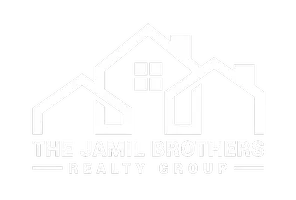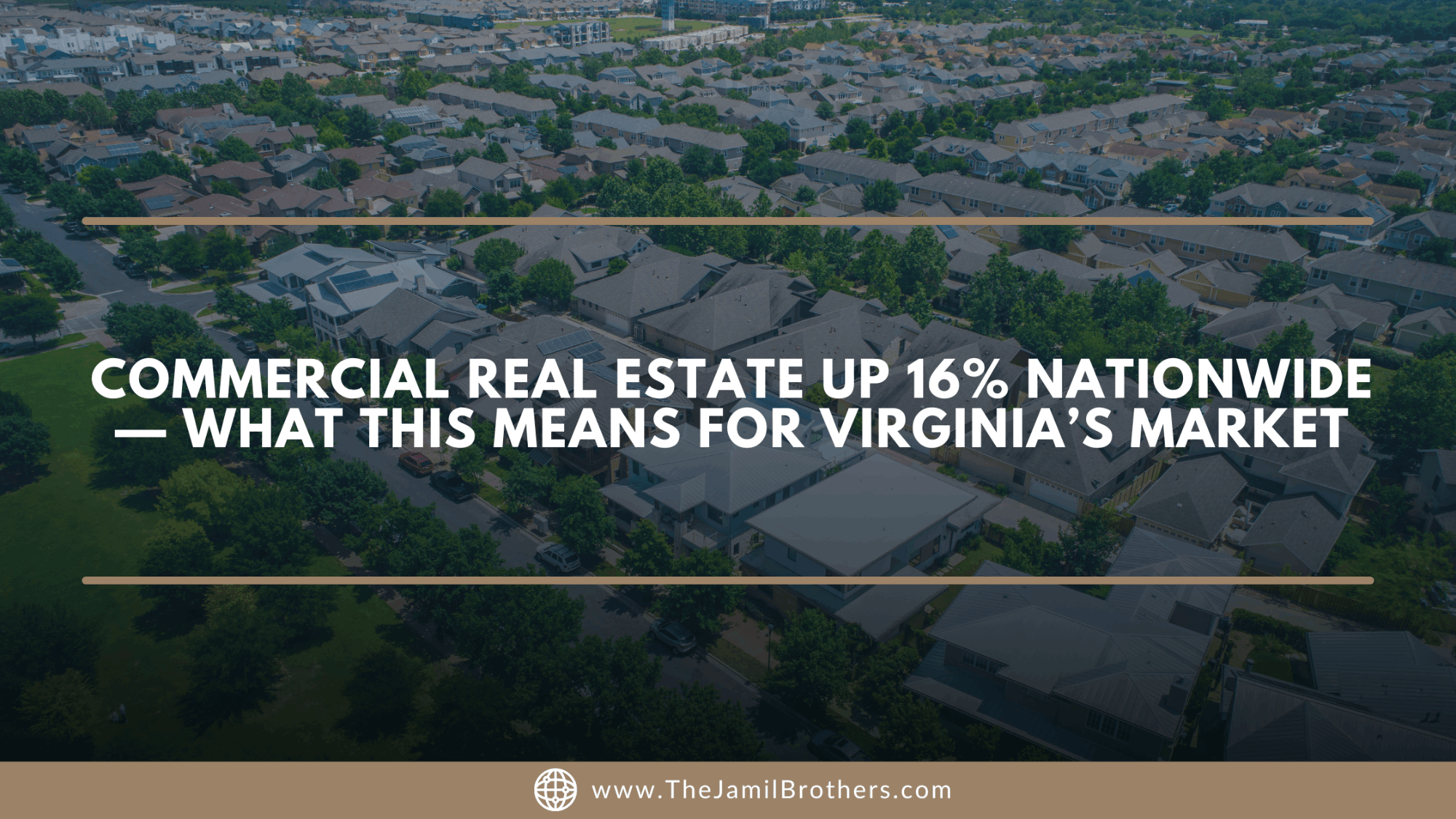Commercial Real Estate Up 16% Nationwide — What This Means for Virginia’s Market
The commercial real estate (CRE) market surged 16% nationwide this year, marking one of the strongest rebounds since the pre-pandemic cycle. From bustling urban hubs to suburban business parks, demand for office, retail, industrial, and multifamily spaces is reshaping investment strategies. But what does this national momentum mean for Virginia’s commercial property market, especially in regions like Northern Virginia, Richmond, and Hampton Roads?
The National Picture: CRE Growth at 16%
Across the U.S., CRE investment is up 16%, driven by three key forces:
- Industrial Strength: Warehousing and logistics remain the backbone of growth, fueled by e-commerce demand.
- Multifamily Surge: High mortgage rates have kept renters in place longer, making multifamily properties highly attractive to investors.
- Retail Revival: Experiential retail, restaurants, and mixed-use developments are drawing renewed consumer activity.
Virginia’s Market: Local Dynamics at Play
In Virginia, commercial real estate is experiencing its own unique momentum:
- Northern Virginia: Tech corridors in Reston, Tysons, and Arlington continue to attract office tenants despite hybrid work trends, while data centers in Loudoun County remain world-leading.
- Richmond: Industrial facilities and last-mile distribution hubs are growing fast, supported by the region’s logistics infrastructure and I-95 corridor.
- Hampton Roads: Military contracts and port activity are driving demand for commercial and industrial space.
Vacancy rates are stabilizing statewide, and investors are looking at Virginia as a relatively “safe bet” compared to more volatile national markets.
Fresh 2025 Data from Virginia’s CRE Market
As of September 2025, here are the latest insights:
| Segment | Key Metric / Change | Details |
|---|---|---|
| Multifamily | Vacancy ~6.1% (Q2) | Absorption positive, but slower vs. 2024. New deliveries down ~20%. Average rent ~$1,826 (↑ 2.5% YoY). |
| Office (NOVA) | Vacancy ~23.2% | Class A vacancy ~27.2%; Class B ~14.8%. Asking rent ~$36.58/SF. Negative net absorption YTD. |
| Cap Rates | 6.4% – 7% in NOVA | Loudoun ~6.44%, Fairfax ~6.41%, Prince William ~7.01%. Richmond: Class A ~4.84%, Class C ~6.71%. |
| Financing | CRE loan rates 5.6–6.1% | Multifamily ~5.08% (up to 80% LTV), general CRE loans ~6.09% (75% LTV). |
Opportunities for Investors & Businesses
For investors and businesses, Virginia offers compelling opportunities:
- Data Centers: Loudoun’s “Data Center Alley” continues to dominate, driving land and infrastructure demand.
- Mixed-Use Developments: Suburban town centers in Fairfax, Alexandria, and Loudoun blend residential, retail, and office spaces to match lifestyle shifts.
- Industrial Expansion: Warehousing and logistics properties near highways and ports are still in high demand.
The Risks to Watch
- Interest Rates: Borrowing costs remain elevated, putting pressure on financing and yields.
- Hybrid Work: Office recovery remains uneven, especially in Class A towers.
- Zoning & Infrastructure: Growth corridors face development bottlenecks.
Visual Dashboard: What the Numbers Show
To better understand the market, here are some suggested visualizations for this data:
- Multifamily Vacancy vs Rent Growth: A line chart showing how vacancy has slightly decreased while rents keep climbing.
- Office Vacancy by Class: A bar/line chart contrasting Class A vs Class B vacancy over the past 5 quarters.
- Cap Rates by County: A bar chart comparing Loudoun, Fairfax, and Prince William.
- Office Asking Rent Changes: A dual bar chart showing QoQ vs YoY shifts in rents.
Frequently Asked Questions
Q1: With such high vacancy in Class A office space in Northern Virginia, is investing in office properties still viable?
A1: Yes, but with caution. Prime locations, amenity-rich features, and repurposing older buildings into mixed-use developments can make investments work. Class A remains challenging, but creative repositioning is key.
Q2: How do current mortgage and lending rates affect potential returns on CRE investments in Virginia?
A2: Elevated rates raise borrowing costs and squeeze cash flow. However, properties in high-demand sectors like multifamily and industrial can still deliver strong returns, especially with long-term leases and stable tenants.
Q3: Given the slowdown in multifamily supply deliveries, will rent growth accelerate significantly?
A3: Likely in strong metro areas, as reduced supply supports pricing power. However, affordability limits and income growth will determine how far rents can rise across the state.
Bottom Line
With CRE up 16% nationwide, Virginia stands to benefit more than most states thanks to its tech economy, defense spending, ports, and population growth. Investors should watch industrial, multifamily, and mixed-use projects for the best opportunities, while staying mindful of the risks in the office sector.
Thinking about investing or expanding in Virginia’s commercial real estate market?
📩 Contact The Jamil Brothers Realty Group TodayCategories
Recent Posts










Let's Connect


